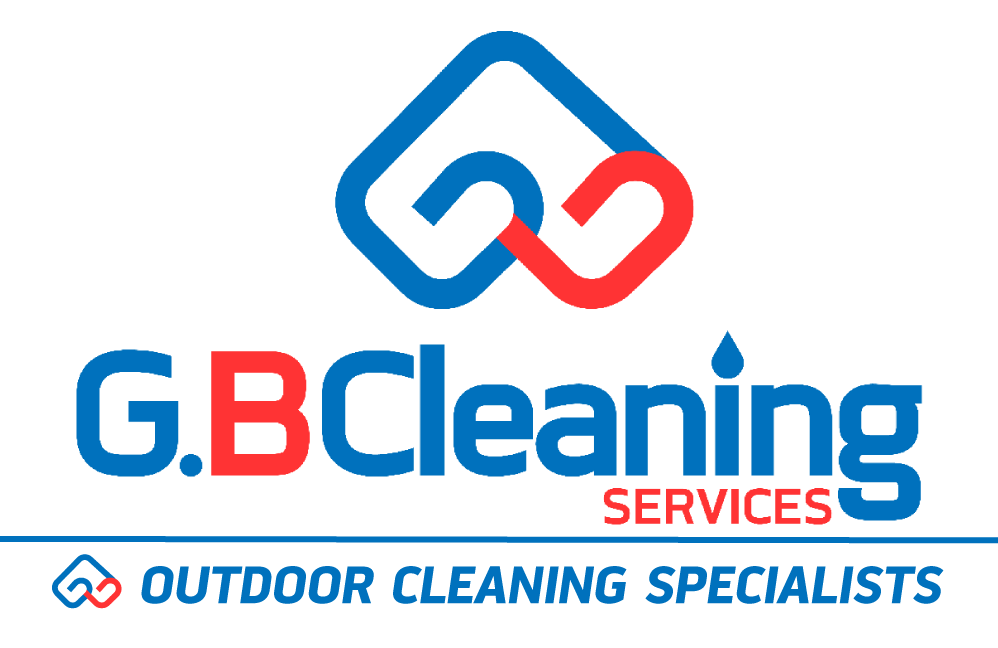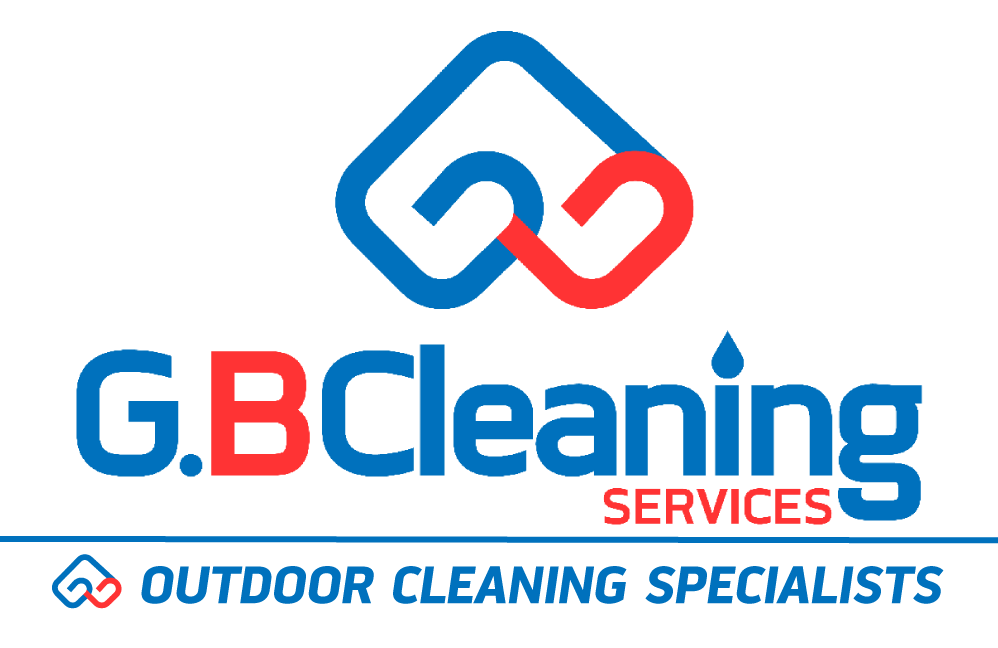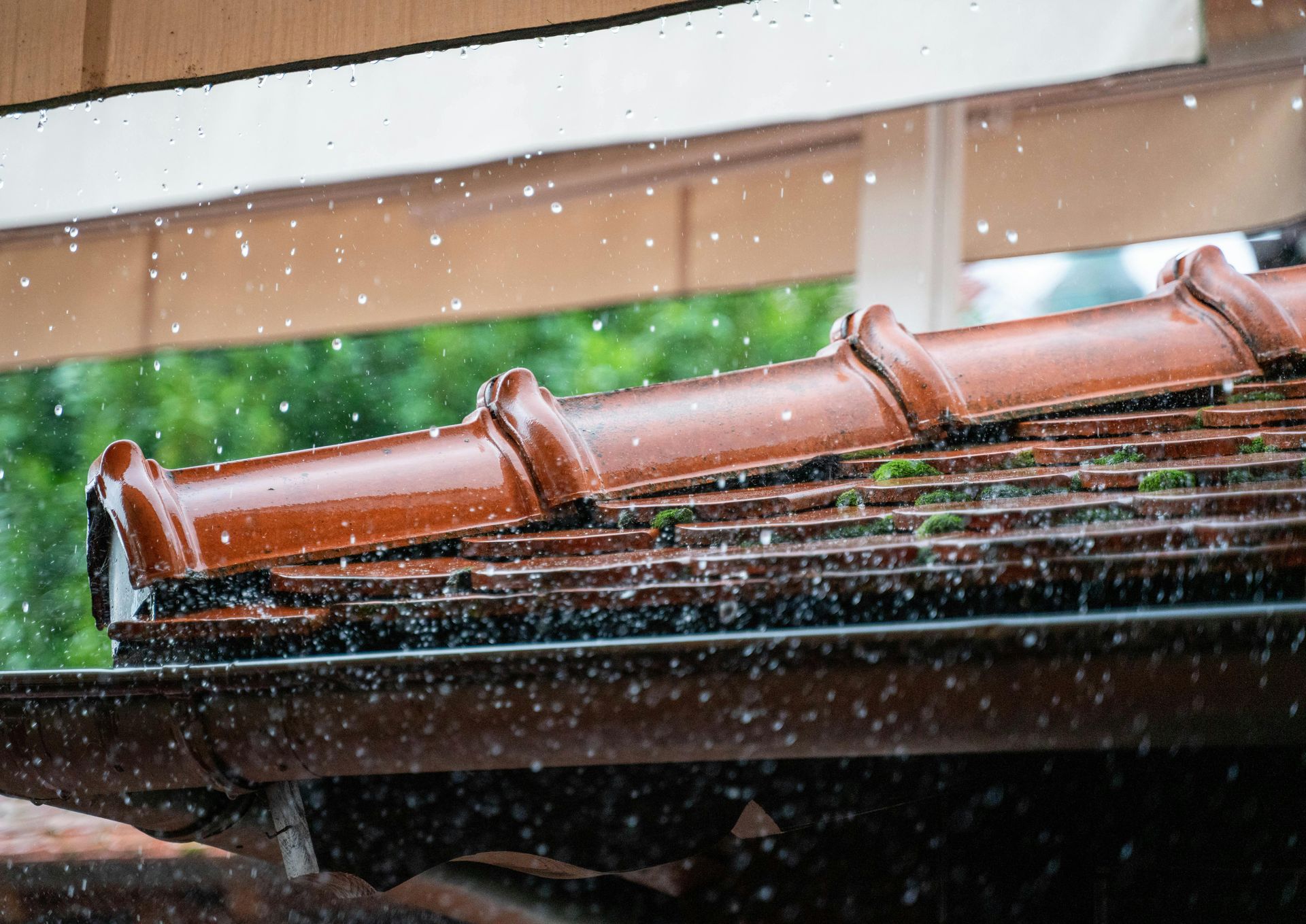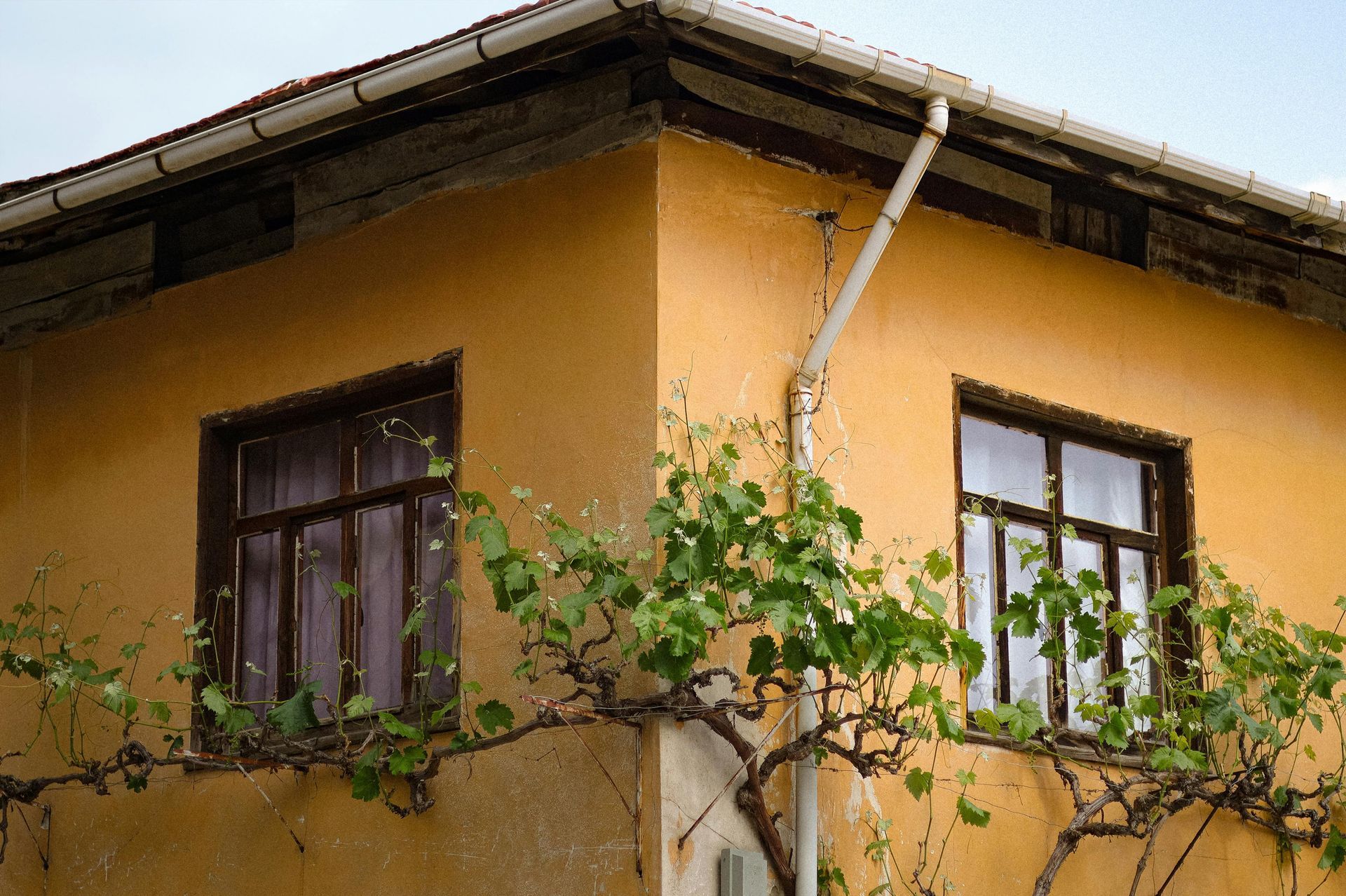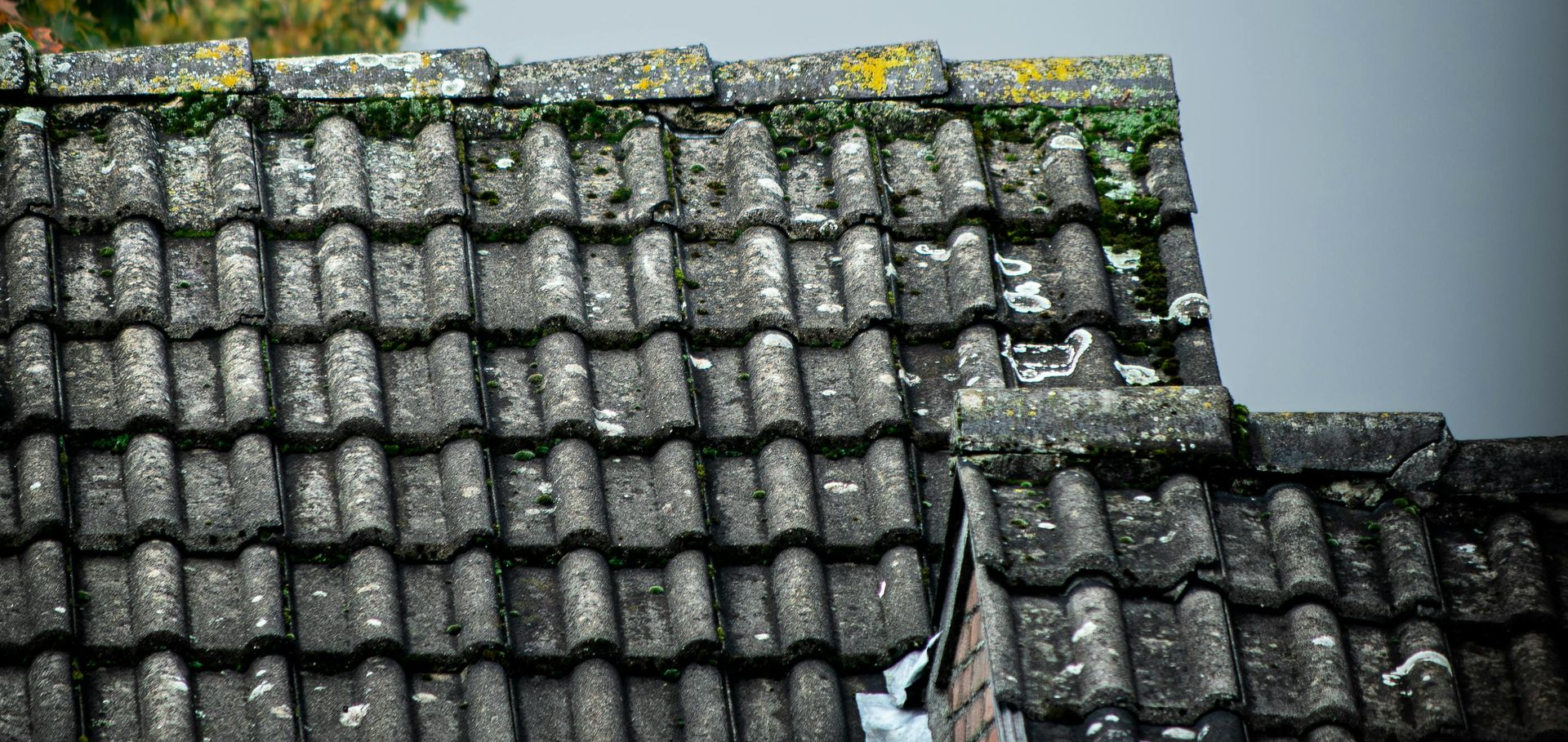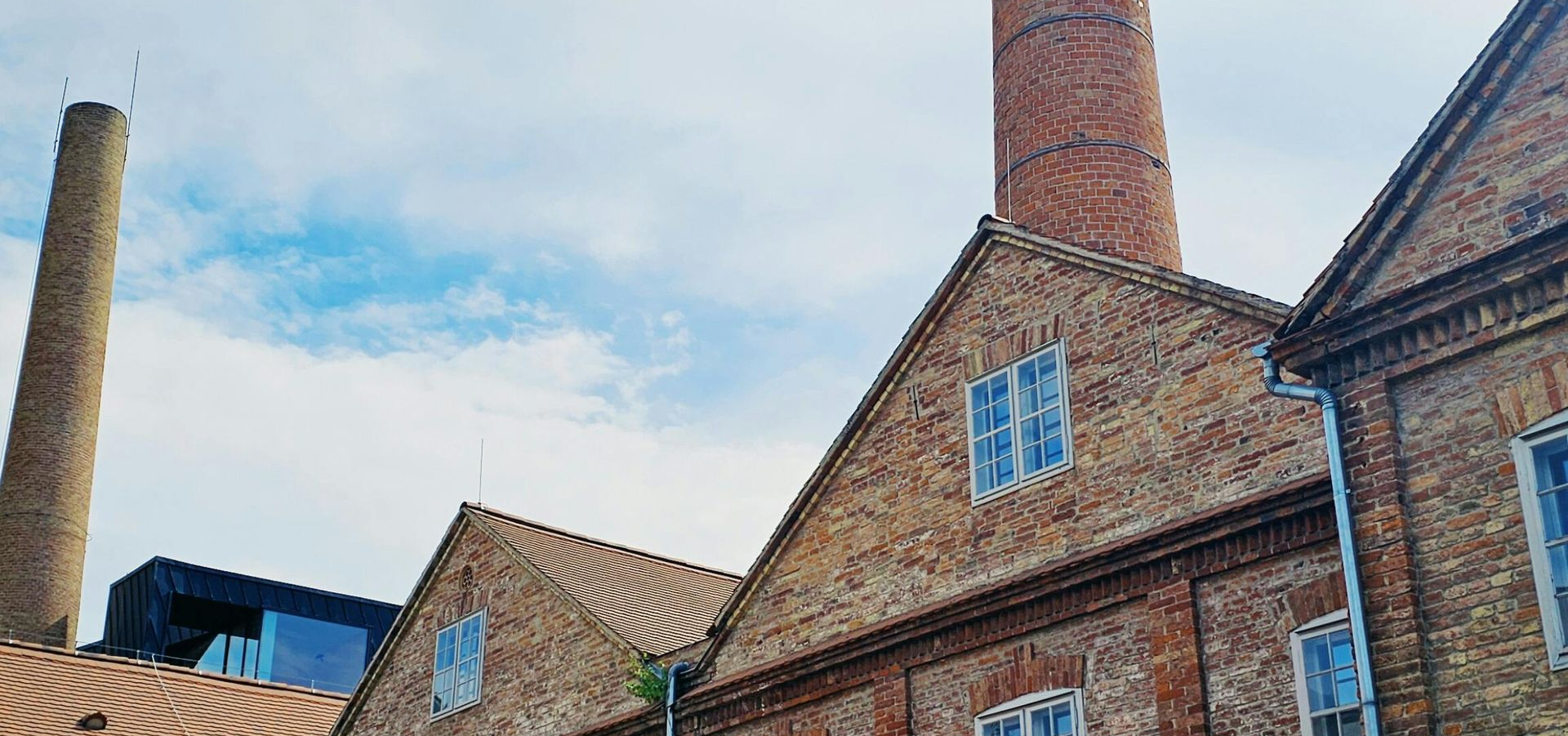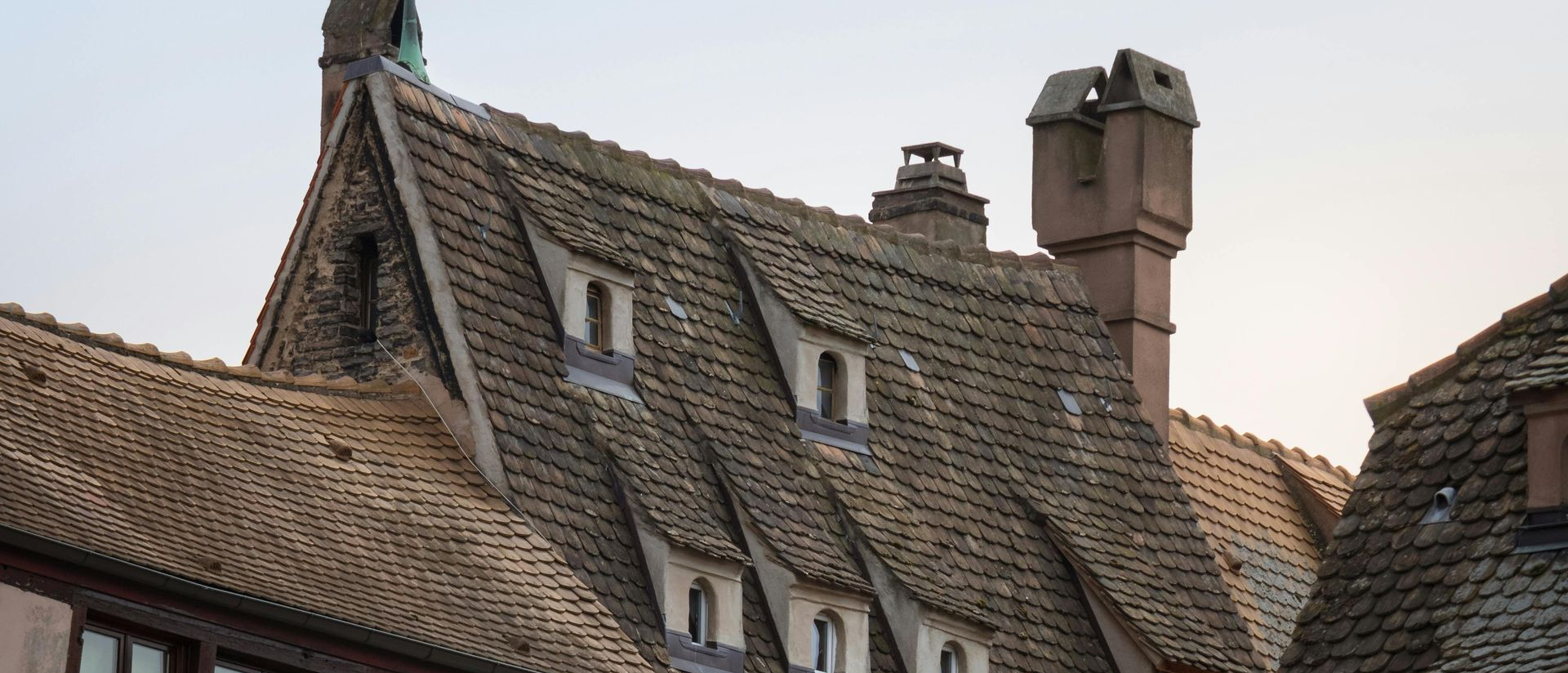UPVC Fascia and Soffit Cleaning: How to Keep White Boards Looking New
White UPVC fascia and soffit boards can dramatically enhance your property's appearance, but keeping them looking pristine requires more than occasional attention. These highly visible components frame your roofline and significantly impact your home's kerb appeal, yet many homeowners struggle with discolouration, staining, and the dreaded yellowing that can make even relatively new installations look tired and neglected.
The challenge with white UPVC isn't simply removing dirt, it's understanding the material's unique properties and avoiding cleaning methods that cause permanent damage. Unlike traditional timber, UPVC has specific vulnerabilities that require careful consideration. Use the wrong product, and you might turn white boards brown permanently. Apply too much pressure, and you could remove the protective surface layer forever.
This guide reveals the professional techniques, product knowledge, and maintenance strategies needed to keep your white UPVC fascia and soffit boards looking as good as new. Whether you're dealing with general grime, stubborn algae, or concerning discolouration, you'll learn the methods that work—and crucially, the mistakes that can cause irreversible damage.
What Are Fascia and Soffit Boards?
Understanding the role and construction of fascia and soffit boards helps you appreciate why proper maintenance matters so much for both appearance and building protection.
Fascia boards run along the lower edge of your roof, providing the mounting point for gutters and creating a finished appearance for the roofline. These boards protect the roof structure from weather whilst providing essential support for your drainage system. When fascia boards look grimy or discoloured, they're immediately noticeable because they form prominent horizontal lines across your property.
Soffit boards connect the fascia to the exterior wall, creating the underside covering for your roof overhang. Often featuring ventilation slots, soffits protect roof timbers from weather whilst allowing essential airflow to prevent condensation problems. Because soffits face downward, they're highly visible from ground level and significantly impact your property's appearance.
Why UPVC replaced timber becomes clear when you consider the maintenance requirements of traditional materials. Timber fascia and soffits required regular painting, were prone to rot in wet conditions, and often attracted insects. UPVC promised low maintenance, weather resistance, and consistent appearance—benefits that remain true when the material receives appropriate care.
However, UPVC brings its own maintenance considerations. The material can be damaged by inappropriate cleaning methods, specific chemicals cause permanent discolouration, and the protective surface coating requires careful handling to maintain its appearance and weather resistance.
Understanding UPVC Material Properties
UPVC's unique characteristics create both advantages and vulnerabilities that directly influence cleaning approaches. Understanding these properties prevents costly mistakes whilst maximising cleaning effectiveness.
The protective surface layer represents UPVC's first line of defence against weather and contamination. This microscopically thin coating provides the glossy finish, UV resistance, and stain resistance that keeps UPVC looking new. Damage to this layer through improper cleaning exposes the base material to accelerated degradation and permanent staining.
The surface layer can be damaged by abrasive cleaning methods, certain chemicals, and excessive pressure during cleaning. Once damaged, this layer cannot be restored through cleaning—the glossy finish and stain resistance are permanently compromised.
Chemical composition includes stabilisers and pigments that provide colour and weather resistance. White UPVC contains titanium dioxide pigments that create the bright white appearance, but these same pigments can react with certain cleaning chemicals to produce permanent brown or yellow discolouration.
Understanding which chemicals cause reactions helps avoid irreversible damage. Bleach, white spirits, methylated spirits, and acetone-based products all pose significant risks to UPVC integrity and should never be used, regardless of how stubborn the contamination appears.
Age and quality variations significantly affect cleaning approaches and realistic expectations. Premium UPVC formulations from reputable manufacturers typically resist staining and discolouration better than budget alternatives, whilst older installations may be more prone to chemical sensitivity and surface damage.
Lower-grade recycled UPVC, sometimes used in budget installations, may yellow more readily and prove more sensitive to cleaning chemicals. Identifying your UPVC's quality and age helps set realistic expectations and choose appropriate cleaning methods.
The Science of White UPVC Discolouration
Understanding why white UPVC changes colour helps you prevent problems and choose appropriate restoration methods when discolouration occurs.
UV-induced yellowing represents the most common and problematic form of UPVC discolouration. Ultraviolet radiation gradually breaks down polymer chains in the material, causing chemical changes that manifest as yellowing. This process typically affects south-facing installations first but eventually impacts all exposed surfaces.
The yellowing occurs within the material itself—not just on the surface. This explains why UV-induced yellowing cannot be removed through cleaning, regardless of products or techniques employed. The material has chemically changed at a molecular level, making restoration through cleaning impossible.
Pollution and environmental staining creates different problems that may be addressable through appropriate cleaning. Urban environments subject UPVC to traffic emissions, industrial pollutants, and airborne particles that create surface deposits. Unlike UV yellowing, these deposits exist on the surface and may respond to suitable cleaning techniques.
Pollution staining often appears as dark streaks, generalised greying, or localised discolouration patterns that follow wind and water flow patterns. The removability depends on how long contamination has been present and whether it has bonded chemically with the UPVC surface.
Biological contamination from algae, moss, and fungi creates both aesthetic problems and potential structural issues. These organisms don't just stain—they produce organic acids that can etch UPVC surfaces and accelerate degradation. The green, brown, or black discolouration from biological growth often indicates moisture problems that require addressing beyond simple cleaning.
Biological growth typically establishes in areas where moisture accumulates—textured surfaces, joints, and areas with poor drainage or ventilation. Successful treatment requires both removing existing growth and addressing underlying moisture conditions.
Chemical damage from inappropriate cleaning attempts represents a preventable cause of permanent discolouration. Homeowners often escalate to stronger chemicals when initial cleaning attempts fail, inadvertently causing worse problems than the original contamination.
Bleach reactions with UPVC stabilisers cause immediate brown discolouration that cannot be reversed. White spirits and similar solvents may cause delayed reactions that appear hours or days after application, making the connection between cleaning and damage less obvious.
Products That Damage UPVC Permanently
Knowing which products to avoid represents crucial knowledge that can save you from expensive mistakes and permanent damage to your fascia and soffit boards.
Bleach and chlorine-based products top the list of chemicals that cause irreversible UPVC damage. These products react with the stabilising chemicals in UPVC, causing immediate chemical reactions that turn white surfaces brown or orange. The reaction occurs regardless of concentration and cannot be stopped or reversed once it begins.
Many household cleaners contain bleach or chlorine compounds that may not be immediately obvious from product names or marketing. Always read ingredient labels carefully and avoid any products containing sodium hypochlorite, chlorine, or bleaching agents.
Solvent-based products including white spirits, methylated spirits, acetone, and nail polish remover can dissolve UPVC stabilisers or react with pigments to cause permanent colour changes. These products may appear to clean effectively initially but often cause delayed damage that becomes apparent within 24-48 hours.
The damage from solvents may manifest as colour changes, loss of surface gloss, or surface softening that makes the material more susceptible to future contamination and damage.
Abrasive cleaners and tools gradually remove the protective surface layer through mechanical action. Cream cleaners such as Cif contain mild abrasives that may brighten surfaces temporarily but create microscopic scratches that trap dirt and dull the surface over time.
Scouring pads, wire wool, and abrasive sponges cause immediate visible scratching that cannot be repaired. Even apparently soft materials can cause damage if used with excessive pressure or aggressive scrubbing motions.
Incompatible spray cleaners often contain ammonia, acids, or other chemicals that can react with UPVC materials. Window cleaners, bathroom cleaners, and general-purpose sprays may contain ingredients that cause staining or surface damage when applied to UPVC.
The safest approach involves using products specifically designed for UPVC cleaning rather than adapting general-purpose cleaners that may contain incompatible chemicals.
Safe and Effective Cleaning Products
Selecting appropriate products forms the foundation of successful UPVC maintenance whilst protecting the material from damage and ensuring long-term appearance.
Basic cleaning solutions start with warm water and quality washing-up liquid, which removes most general contamination safely and effectively. Use approximately half a cup of washing-up liquid per two gallons of warm water, creating sufficient cleaning power without leaving residues that attract dirt.
This basic solution handles everyday grime, light organic staining, and general maintenance cleaning without risk of material damage. The gentle surfactants lift contamination whilst remaining completely compatible with UPVC materials.
Specialised UPVC cleaners offer enhanced performance for stubborn contamination whilst maintaining material safety. Products such as No Nonsense UPVC Cleaner, HG UPVC Cleaner, and ZEP UPVC Solvent Cleaner are specifically formulated to remove traffic film, organic deposits, and light discolouration.
These commercial products often achieve superior results compared to household alternatives whilst providing confidence in material compatibility. Always follow manufacturer instructions regarding dilution rates, application methods, and contact times.
Natural cleaning alternatives provide effective, environmentally-friendly options for regular maintenance. White vinegar diluted 1:4 with water creates a mild acidic solution that removes water marks, light organic staining, and mineral deposits without harming UPVC surfaces.
Bicarbonate of soda paste provides gentle abrasive action for spot treatment of stubborn marks. Mix small amounts of baking soda with water to create a paste consistency, apply to problem areas, allow several minutes contact time, then gently scrub and rinse thoroughly.
Application and safety considerations ensure effective use whilst preventing accidents or material damage. Always test new products on inconspicuous areas first, allowing 24-48 hours to observe any delayed reactions before proceeding with full treatment.
Wear appropriate protective equipment including gloves and eye protection when using any cleaning chemicals. Ensure adequate ventilation when working with commercial cleaners, and never mix different cleaning products as chemical reactions may produce hazardous gases.
Manual Cleaning Techniques
Hand cleaning provides maximum control and thoroughness for UPVC maintenance, particularly valuable for detailed work around fixings, joints, and areas requiring careful attention.
Preparation and safety setup establish the foundation for effective and safe cleaning operations. Position ladders on stable, level ground with someone available to provide stability if possible. Ensure ladder feet are secure and the working angle provides safe access to all areas requiring attention.
Gather all necessary materials before beginning work to minimise ladder movements and interruptions. Include cleaning solutions, application tools, rinse water, and drying materials in your preparation to maintain workflow efficiency and safety.
Systematic cleaning approach ensures thorough coverage whilst preventing missed areas and maintaining consistent results. Work in manageable sections, typically 2-3 metres at a time, completing all cleaning steps before moving to adjacent areas.
Begin each section by removing loose debris with a soft brush, then apply cleaning solution using a sponge or soft cloth. Allow adequate contact time for the cleaning solution to penetrate contamination before gentle scrubbing and thorough rinsing.
Detailed attention areas require specific techniques to address common problem zones. Corners, joints, and textured areas often accumulate contamination that resists general cleaning approaches. Use soft toothbrushes or cotton buds to access these areas without causing damage to surrounding surfaces.
Ventilation slots in soffit boards require careful cleaning to maintain airflow whilst removing contamination. Use compressed air or soft brushes to clear blockages without damaging the ventilation function.
Rinse and finish procedures complete the cleaning process and significantly affect final appearance. Thorough rinsing removes all cleaning solution residues that could attract dirt or cause streaking. Work from top to bottom using clean water to ensure complete removal of cleaning chemicals.
Allow surfaces to air dry naturally when possible, as this typically produces the most uniform appearance. If manual drying is necessary, use clean, lint-free cloths and work systematically to prevent water spots and streaking.
Pressure Washing Methods
Pressure washing offers efficiency advantages for large areas and can safely reach heights from ground level when proper techniques and equipment are employed.
Equipment selection and setup significantly influence results and safety. Use pressure washers with adjustable pressure settings, starting with low pressure (1000-1500 PSI) and increasing gradually only if necessary. Higher pressures risk surface damage and can force water into building cavities.
Select appropriate nozzle tips for the cleaning task—wide-angle tips for general cleaning and narrower angles for stubborn contamination. Maintain consistent distance from surfaces (typically 12-18 inches) to ensure uniform cleaning without damage.
Chemical application techniques using pressure washer soap injection systems provide efficient detergent application with controlled dilution rates. Apply cleaning solutions systematically, working in manageable sections to prevent solutions drying before removal.
Allow adequate dwell time for cleaning chemicals to penetrate contamination—typically 5-10 minutes depending on contamination type and product recommendations. Avoid allowing solutions to dry completely on surfaces as this can cause streaking and increase rinse requirements.
Cleaning technique and safety considerations require systematic approaches that ensure thorough results whilst preventing damage. Work from bottom to top when applying cleaning solutions to prevent streaking, then rinse from top to bottom to ensure complete removal.
Maintain consistent overlap between passes to prevent striping and ensure uniform appearance. Be particularly careful around electrical fixtures, ventilation openings, and building penetrations where water intrusion could cause problems.
Quality assessment and problem areas conclude pressure washing by evaluating results and addressing any missed contamination or persistent staining. Some types of contamination may require multiple treatment cycles rather than increased pressure or stronger chemicals.
Document areas that resist standard pressure washing for consideration of alternative treatments or professional intervention. Attempting to increase pressure beyond equipment capabilities or using inappropriate chemicals often worsens problems rather than solving them.
Treating Specific Contamination Types
Different types of contamination require tailored approaches that address their specific characteristics whilst maintaining UPVC integrity and appearance.
Algae and moss removal requires killing active organisms before attempting physical removal to prevent immediate regrowth and ensure complete elimination. Commercial moss and algae treatments designed for building surfaces provide effective solutions without harming UPVC materials.
Apply biocide treatments according to manufacturer instructions, typically allowing 24-48 hours for complete organism death. Dead biological material often removes more easily and completely than living growth, reducing the mechanical force required for removal.
Follow biocide treatment with gentle mechanical removal using soft brushes or cloths. Avoid aggressive scrubbing that might damage UPVC surfaces or embed dead material into surface pores. Thorough rinsing removes treatment residues and prevents contamination of surrounding areas.
Traffic film and pollution staining often requires specialised products designed to dissolve complex organic deposits without harming UPVC surfaces. These deposits may include oily residues, particulate matter, and chemical compounds that resist simple soap and water cleaning.
Apply specialised cleaners according to manufacturer instructions, allowing adequate contact time for penetration of stubborn deposits. Multiple treatment cycles often prove more effective than single applications of stronger chemicals that risk surface damage.
For heavy contamination, consider professional assessment to determine the most appropriate treatment approach. Some types of pollution staining may require specialised equipment or techniques beyond typical homeowner capabilities.
Water marks and mineral deposits typically respond well to mild acidic solutions such as diluted white vinegar. These deposits form when water evaporates leaving dissolved minerals on UPVC surfaces, creating white or grey marks that may appear etched into the material.
Apply acidic solutions using soft cloths, allowing several minutes contact time for mineral dissolution. Gentle scrubbing may be necessary for stubborn deposits, but avoid excessive pressure that could damage surface finishes.
Thorough rinsing removes dissolved minerals and prevents acid damage to UPVC surfaces. Some mineral deposits may require multiple treatments, particularly in areas with very hard water or where deposits have been present for extended periods.
Yellowing and chemical staining present the most challenging restoration problems because they often involve permanent chemical changes within the UPVC material itself. Surface treatments may provide temporary improvement but cannot reverse underlying chemical degradation.
UPVC restoration products containing optical brighteners may temporarily improve appearance by filling surface imperfections and providing enhanced light reflection. These products typically require regular reapplication as weather exposure gradually removes the treatment.
For severe yellowing or chemical damage, professional assessment helps determine whether restoration attempts are worthwhile or whether replacement provides better long-term value. Realistic expectations prevent costly attempts at impossible restoration projects.
Maintaining Long-Term Appearance
Establishing systematic maintenance approaches prevents problems whilst preserving the appearance and protective function that makes UPVC fascia and soffit boards so attractive.
Regular inspection routines identify developing problems early when they remain easily addressable. Monthly visual assessments from ground level can spot contamination accumulation, biological growth, and damage that might require attention.
Look for changes in colour uniformity, development of staining patterns, and signs of biological growth that may indicate moisture problems or cleaning needs. Early intervention prevents minor issues from developing into major restoration projects.
Protective treatments and coatings provide additional defence against environmental factors whilst extending periods between required cleaning. UV-protective sprays designed for UPVC surfaces can slow photodegradation processes, particularly valuable for south-facing installations.
Hydrophobic treatments encourage water and contamination to sheet off surfaces rather than adhering, reducing both moisture retention and dirt accumulation. These treatments prove particularly beneficial in areas prone to moss and algae growth.
Environmental management strategies reduce contamination sources whilst protecting UPVC surfaces from accelerated degradation. Strategic landscaping decisions can significantly impact maintenance requirements whilst enhancing property appearance.
Consider tree placement and species selection to balance shading benefits against organic debris problems. Deciduous trees provide beneficial UV shading but increase autumn cleaning requirements, whilst evergreen species create year-round shading with different maintenance implications.
Documentation and monitoring track maintenance effectiveness whilst building valuable records for warranty claims and future planning. Photographic records document appearance changes over time whilst written logs track cleaning frequency, products used, and results achieved.
This documentation proves valuable for identifying optimal maintenance intervals, evaluating product effectiveness, and supporting warranty claims if problems develop. Professional services often provide detailed records that enhance property maintenance documentation.
Professional Services vs DIY
Understanding when to engage professional services versus attempting DIY maintenance helps optimise results whilst managing costs and safety considerations effectively.
Safety and access considerations often favour professional services for multi-storey properties or installations with challenging access requirements. Professional cleaners possess proper safety equipment, training, and insurance coverage that eliminates accident risks whilst often achieving superior results.
DIY approaches prove most suitable for single-storey installations or areas accessible from stable ground-level platforms. Height work should only be attempted by individuals comfortable with ladder use and possessing appropriate safety equipment and knowledge.
Equipment and technique advantages available to professional services may justify service costs through improved results and efficiency. Professional-grade equipment often achieves better contamination removal whilst working safely from ground level through water-fed pole systems and high-reach cleaning apparatus.
Professional expertise also includes systematic approaches developed through extensive experience with various contamination types and UPVC formulations. This knowledge helps avoid common mistakes whilst achieving optimal results efficiently.
Cost and value considerations require balancing immediate service costs against long-term value, safety benefits, and result quality. Professional UPVC cleaning typically costs £40-£100 for average residential applications, representing excellent value considering equipment requirements, safety benefits, and result quality.
DIY approaches involve equipment acquisition, product costs, time investment, and potential accident risks that must be factored into realistic cost comparisons. Professional services often prove economical when all factors receive proper consideration.
Quality and warranty benefits from professional services provide additional value through comprehensive results and performance guarantees. Professional cleaners typically guarantee their work and return to address any issues without additional charges.
Professional services also provide valuable assessment of UPVC condition and recommendations for addressing developing problems before they require expensive repairs or replacement.
When Cleaning Isn't Enough
Recognising when cleaning cannot address UPVC problems prevents costly attempts at impossible restoration whilst identifying appropriate alternative solutions.
Permanent chemical damage from UV degradation or inappropriate cleaning attempts cannot be reversed through any cleaning method. Chemical yellowing represents permanent molecular changes within the UPVC that no surface treatment can address.
Understanding these limitations prevents expensive attempts at restoration using increasingly aggressive methods that often worsen problems. Professional assessment helps determine whether problems represent cleanable contamination or permanent material changes.
Surface damage and deterioration from mechanical abrasion, chemical attack, or weather exposure may require restoration techniques beyond simple cleaning. Loss of surface gloss, etching from acid exposure, or mechanical scratching cannot be corrected through conventional cleaning methods.
Some surface damage may respond to specialised restoration techniques or professional refinishing services, whilst severe degradation may necessitate replacement to restore appearance and protective function.
Structural and installation issues may manifest as appearance problems that cleaning cannot address. Loose fixings, damaged joints, or water ingress problems require structural attention rather than cleaning solutions.
Professional assessment helps distinguish between cleaning issues and structural problems, preventing costly cleaning attempts when repair or replacement provides the appropriate solution.
Conclusion: Protecting Your Investment
Maintaining white UPVC fascia and soffit boards requires understanding the material's unique properties, using appropriate products and techniques, and recognising the limitations of cleaning approaches. Success depends on prevention rather than restoration, making regular maintenance far more cost-effective than attempting to address advanced deterioration.
The key principles centre on gentle, appropriate cleaning methods using compatible products whilst avoiding the chemicals and techniques that cause permanent damage. Understanding what not to use proves as important as knowing proper cleaning methods—bleach, solvents, and abrasive approaches cause irreversible damage that no amount of subsequent care can correct.
Professional services offer significant advantages through proper equipment, proven techniques, and comprehensive insurance coverage, particularly for challenging access situations or severely contaminated installations. However, informed DIY maintenance using appropriate methods can achieve excellent results for accessible installations when safety considerations receive proper attention.
Most importantly, realistic expectations about what cleaning can achieve prevent costly attempts at impossible restoration projects. UV-induced yellowing and chemical damage cannot be reversed through cleaning, regardless of products or techniques employed. Recognising these limitations early helps focus efforts on achievable improvements whilst planning appropriately for situations requiring professional intervention or replacement.
With proper knowledge, appropriate products, and systematic maintenance approaches, your white UPVC fascia and soffit boards can maintain their appearance and protective function for decades, providing excellent return on your property investment whilst enhancing your home's kerb appeal and value.
